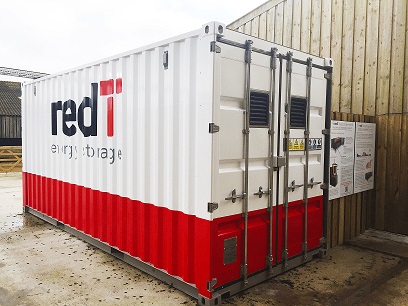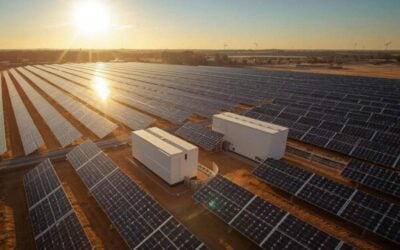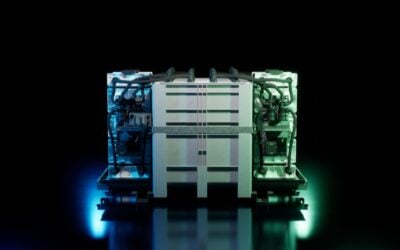
What is thought to be the largest operating containerised vanadium redox flow machine system in the UK has been connected to the grid by manufacturer redT energy, with the 1MWh project becoming the first to sign up to a local energy market being set up by British multinational utility Centrica.
The project was announced in April and has now been completed at the Olde House, a 600 acre working farm and holiday retreat situated in north Cornwall, in the south west of England, an area where much of the country’s large-scale solar facilities are located.
The energy storage system will fulfil a number of roles on site, including shifting the farm’s excess solar generation to use in evening peak times. This is expected to save The Olde House up to 50% on grid imports during these periods.
It will also create revenue by tracking and dynamically responding to changes in grid frequency and providing grid services, while also aiming to participate in the Capacity Market, UK grid operator National Grid’s mechanism for paying generators to guarantee resiliency of power supply.
Try Premium for just $1
- Full premium access for the first month at only $1
- Converts to an annual rate after 30 days unless cancelled
- Cancel anytime during the trial period
Premium Benefits
- Expert industry analysis and interviews
- Digital access to PV Tech Power journal
- Exclusive event discounts
Or get the full Premium subscription right away
Or continue reading this article for free
RedT expects this type of project to achieve an internal rate of return (IRR) percentage in the mid-teens.
Scott McGregor, chief executive of the company, redT energy, said: “We are delighted to announce that our flagship energy storage project in the UK is now fully operational. This remains one of the only commercial energy storage projects of its kind in the UK as a fully flexible energy storage platform, demonstrating the company’s industry leading position in the sector.
“Through ‘firming’ onsite solar generation, this system will generate significant savings for The Olde House, by enabling the owners to greatly reduce the need to import electricity from the grid. The machines will also engage revenue producing grid services and energy trading opportunities with the help of Centrica and the LEM.”
McGregor has for some time instructed his staff never to refer to his company’s redox flow energy storage systems as “flow batteries”, arguing instead that they should be called “flow machines”, due to their ruggedness and versatility for use in multiple applications, versus batteries, a term which he considers implies a disposable commodity.
The Local Energy Market (LEM) is a £19 million (US$24.88 million) trial project being carried out by Centrica to demonstrate the role that flexible generation and storage can play in relieving pressure on the grid and driving down energy prices in the UK.
The project, announced in December 2016, will use connected homes and businesses in the region with local renewable generators via an online virtual market place, allowing them to sell energy capacity to both the grid and the wholesale energy market at times of increased or decreased demand.
In an update in February, Centrica said it was aiming to bring around 60 local businesses into the trial using a funding pot of £6 million for participants.
The company gave financial backing to the redT project and will take over control of the system in due course. Centrica will then operate the asset remotely, engaging in energy trading and arbitrage of behalf of The Olde House to generate revenue.
Matt Hastings, programme director of the Cornwall LEM trial at Centrica, said: “Energy storage will play a fundamental part in the programme, providing the local network operator with a tool to help stabilise the system, relieving constrained parts of the network, and giving homes and businesses the ability to store their own energy.”
“We are very fortunate to be working with Centrica and The Olde House on this flagship UK energy project, which proves flow machines as a commercially attractive, viable solution and flexible platform for the UK’s energy future,” McGregor added.
RedT claims the potential addressable market for behind the meter industrial and commercial energy storage in the UK is in the range of 3,000GWh total. Speaking to Clean Energy News back in May, McGregor said energy storage had now reached the point of commercial viability in the UK as prices fall while the value of some grid services and arbitrage increase.





